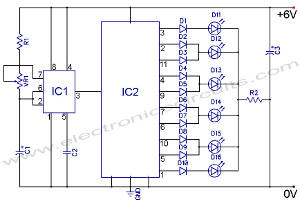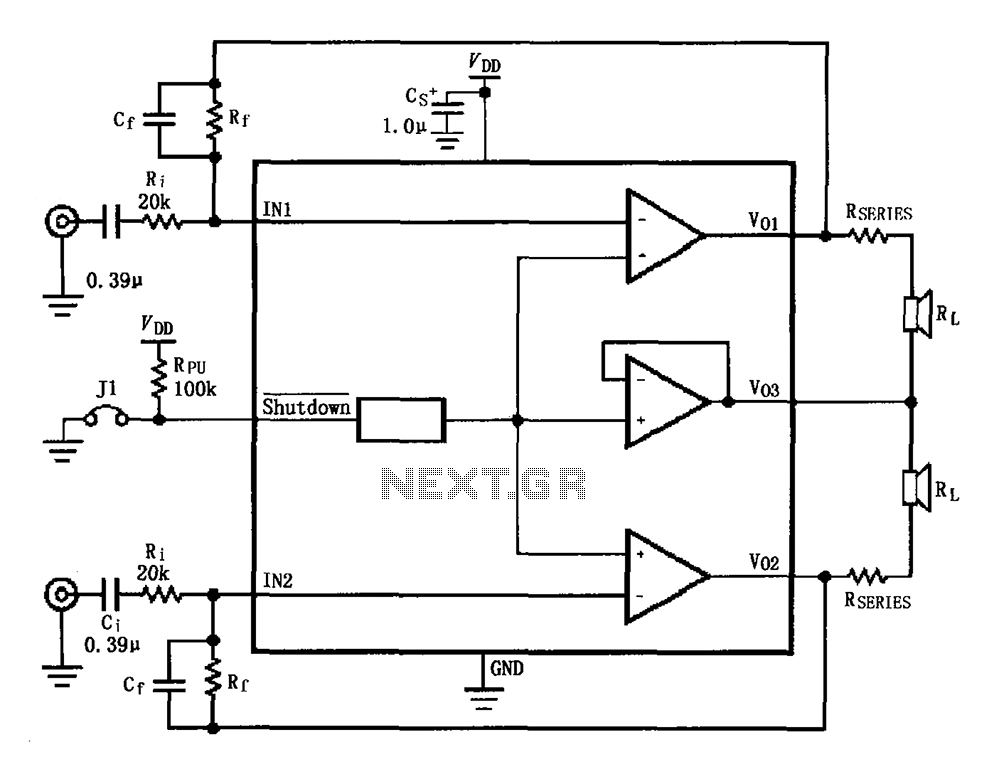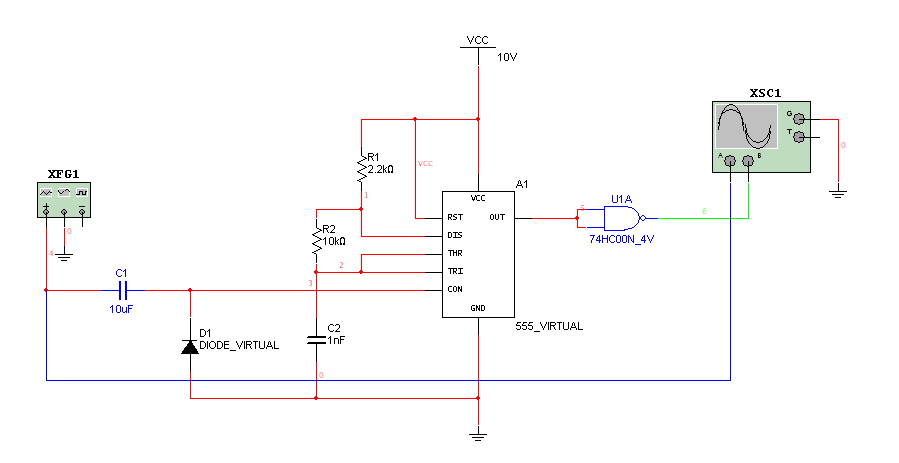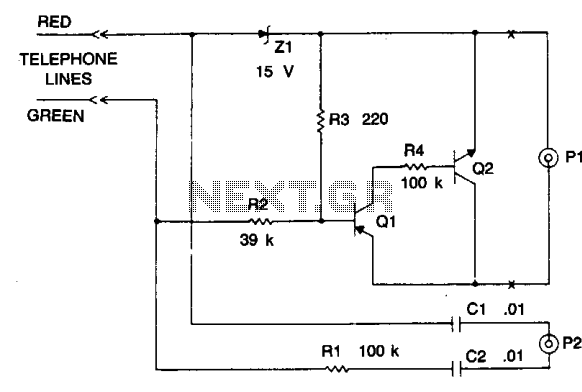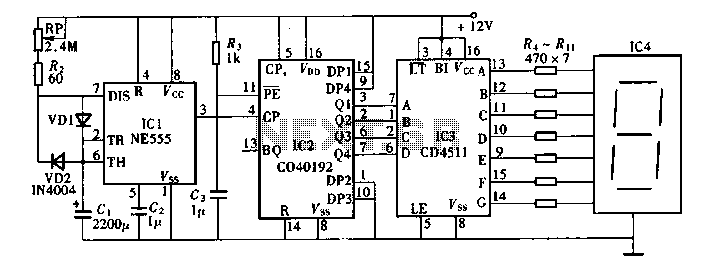
Headlight circuit
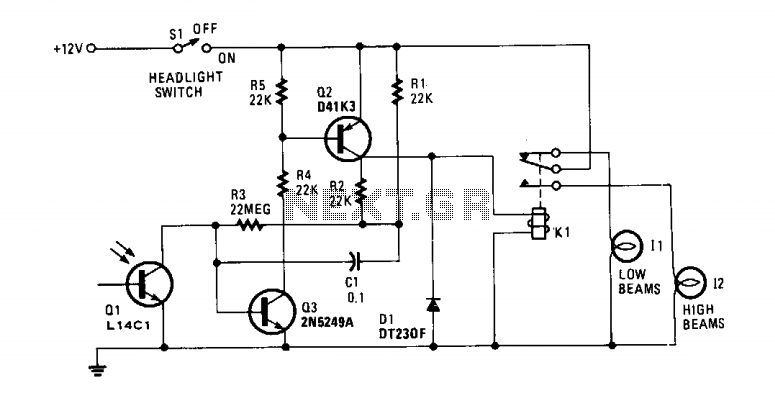
When the lights of an oncoming car are detected by the photo-transistor Q1, the circuit activates. Sensitivity is adjusted by the 22-megohm resistor, R5, to approximately half a foot-candle. The relay employed has a 12-volt, 0.3A coil. The L14C1 is equipped with a lens that has a diameter of one inch, providing a 10° viewing angle.
The circuit operates by utilizing a photo-transistor (Q1) that responds to light levels. When the photo-transistor detects the illumination from an approaching vehicle's headlights, it triggers the circuit to activate a relay. The relay, rated for 12 volts and 0.3 amps, serves as a switch to control a higher power load, which may include lights or other devices.
The sensitivity of the photo-transistor is finely tuned by the 22-megohm resistor (R5), which defines the threshold light level required for activation. This resistor ensures that the circuit only responds to significant light levels, preventing false triggering from ambient light sources. The sensitivity is set to about half a foot-candle, a low level that allows the circuit to respond to the headlights of vehicles while ignoring other light sources.
The L14C1 component, which includes a lens with a one-inch diameter and a 10° viewing angle, aids in focusing the light onto the photo-transistor. This lens configuration helps to narrow the detection range, ensuring that the circuit is primarily responsive to light from directly in front, such as that from oncoming cars, rather than stray light from other directions.
In summary, this circuit is designed for effective light detection and control, utilizing a photo-transistor, a precision resistor for sensitivity adjustment, and a relay to manage the output load. The inclusion of a focused lens further enhances the performance of the light detection system, making it suitable for applications where reliable detection of vehicle headlights is essential.When the lights of an on-coming car are sensed by photo-transistor Ql, things get going. Sensitivity is set by the 22-megohm resistor, R5, to about half a foot-candle. The relay used has a 12-volt, 0.3A coil. The L14C1 is complete with a lens that has a diameter of one inch for a 10° viewing angle. 🔗 External reference
The circuit operates by utilizing a photo-transistor (Q1) that responds to light levels. When the photo-transistor detects the illumination from an approaching vehicle's headlights, it triggers the circuit to activate a relay. The relay, rated for 12 volts and 0.3 amps, serves as a switch to control a higher power load, which may include lights or other devices.
The sensitivity of the photo-transistor is finely tuned by the 22-megohm resistor (R5), which defines the threshold light level required for activation. This resistor ensures that the circuit only responds to significant light levels, preventing false triggering from ambient light sources. The sensitivity is set to about half a foot-candle, a low level that allows the circuit to respond to the headlights of vehicles while ignoring other light sources.
The L14C1 component, which includes a lens with a one-inch diameter and a 10° viewing angle, aids in focusing the light onto the photo-transistor. This lens configuration helps to narrow the detection range, ensuring that the circuit is primarily responsive to light from directly in front, such as that from oncoming cars, rather than stray light from other directions.
In summary, this circuit is designed for effective light detection and control, utilizing a photo-transistor, a precision resistor for sensitivity adjustment, and a relay to manage the output load. The inclusion of a focused lens further enhances the performance of the light detection system, making it suitable for applications where reliable detection of vehicle headlights is essential.When the lights of an on-coming car are sensed by photo-transistor Ql, things get going. Sensitivity is set by the 22-megohm resistor, R5, to about half a foot-candle. The relay used has a 12-volt, 0.3A coil. The L14C1 is complete with a lens that has a diameter of one inch for a 10° viewing angle. 🔗 External reference
